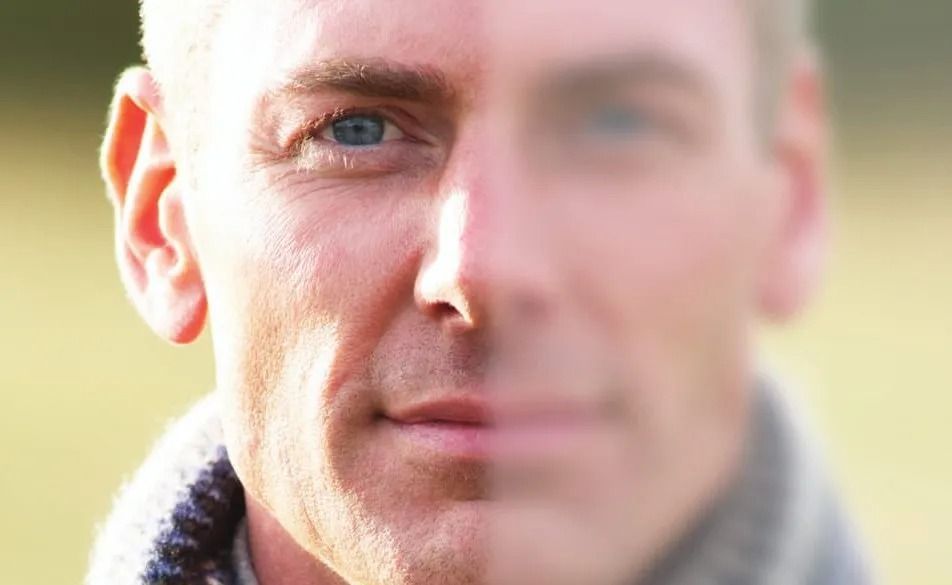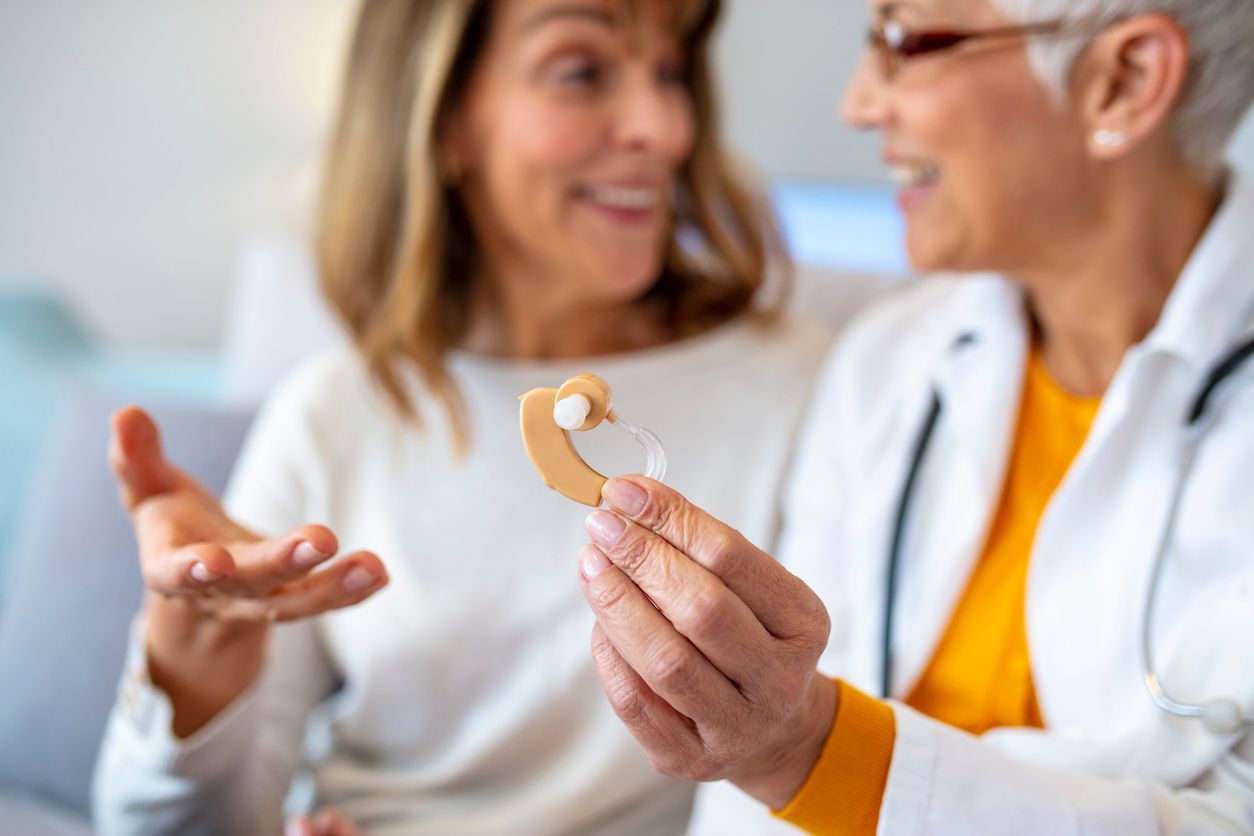One "Dead" Ear

Today’s treatment options for single-sided deafness, often referred to as a “dead” ear, can vastly improve a person’s quality of life and safety.
Have you ever wondered why we have two ears instead of just one? Our ears come as a pair for several very important reasons. Here’s why.
Localization
Having an ear on each side of your head makes it easier to determine where sound is coming from. This is called localization. Try this experiment: Plug one ear then have someone stand behind you and speak to you. It becomes very difficult to determine, without looking, if the person is to your right, left or directly behind you.
Clarity
Having two ears also allows you to hear sounds more clearly. Have you ever listened to a stereo, and one speaker is not working? How does it sound? Muffled and garbled, right? Two speakers give you crisper, louder sound. The same is true with your two ears.
Cushioning
Having two ears also provides cushioning for louder sounds as the sound is divided between both ears. It allows you to tolerate sudden, jarring sounds much easier.
With all this in mind, it is simple to understand how important it is to receive sound from both sides of the head. Now consider that a unique type of hearing loss, called single-sided deafness, affects tens of thousands of Americans. Just as the name of the condition implies, single-sided deafness is when a person has lost all hearing in one ear and has normal to even profound hearing loss in the other ear. The condition is also referred to as having a “dead” ear.
Though the precise causes for single-sided deafness are not always identified, it may be caused by viral infections, a sudden and prolonged decrease in blood pressure, Meniere’s disease (an inner ear disorder which causes dizziness), a stroke within the inner ear, genetic defects, vascular diseases, physical trauma to the head or ear, autoimmune diseases and surgical removal of tumors within the lower part of the brain.
Each year, 60,000 new cases of single-sided deafness are diagnosed in the United States, and since your brain expects to hear sounds from both the right and the left ear equally, single-sided deafness can be a real challenge for those who suffer with it. Commonplace activities—that those with normal hearing take for granted—are hurdles that must be surmounted daily. In fact, those with single-sided deafness report that difficulty understanding basic conversations with others, especially when any background noise is present, is one of the most difficult struggles associated with the condition.
Patients with single-sided deafness often relate that every listening environment requires a plan, a workaround. For instance, professionals with single-sided deafness often mention that they must arrive at meetings early to carefully pick a seat in the room which will allow the best opportunity to hear as much as possible.
Mike Gallagher, age 75, struggled with single-sided deafness since birth. He related this experience: “I was in management at Wal-Mart for 20 years, and my hearing loss really impacted my work life. Tasks like working a check-out line were impossible for me because as I scanned items for purchase, I wasn’t able to distinguish a beep at my register from beeps at other registers. When someone called to me over the walkie-talkie, I couldn’t hear them. When I finally addressed my single-sided deafness, it made a huge difference in my life.”
A parent of a child with the condition explained that participating in Little League, an iconic childhood pastime, was a struggle for her young son because the typical raucous background noises of a ball field make verbal cues from the coach almost impossible for him to discern and process.
Attending a church service, eating in a restaurant, conversing with a loved one on a car ride, recognizing a honking horn in traffic—all these activities become a mountain to climb for those with single-sided deafness. And what does this mean for the brain? It is working double time to keep up. Those with single-sided deafness report that everyday listening environments can be intimidating, stressful and exhausting. In fact, a technical audiologic term even exits for it—listening fatigue. Over time, research shows that various forms of untreated hearing loss—including single-sided deafness—can lead to social isolation, anxiety, and depression and can contribute to brain tissue loss and dementia.
Most troubling is that single-sided deafness is all too often discounted and left unaddressed because of a lack of awareness and understanding of the condition and of the treatment options, even among some medical practitioners. People with single-sided deafness are told their hearing is “adequate,” that they will “adapt” and are left untreated.
Here’s the great news though! Advancements in hearing aid technology now offer a host of options so that “adequate hearing” and “adapting” can become a thing of the past for many with the condition. By working with your partner in hearing health—a university-trained audiologist—restoration of the sensation of hearing from both sides is now available for many challenged with single-sided deafness.
Current treatment and technology options are outlined below, and it is worth noting that this advanced technology is available from reputable, university-trained audiologists and not through channels like hearing aid counters at big box stores or off the internet.
Contralateral Routing Of Signals (CROS) hearing aid system
With a CROS hearing aid system, a person wears a device on the poorer ear that wirelessly transmits sound signals from that side of the head to an instrument on the better ear. If a person also has some hearing loss in their better ear, a BiCROS device can address their needs for both ears, with a BICROS being a CROS transmitter paired with an active hearing aid. Several of the major hearing aid manufacturers offer a CROS and BICROS system.
Bone-conduction hearing aid
With a bone-conduction hearing aid, a bone vibrator is held on the mastoid bone behind the poorer ear by a soft or rigid headband. The aid detects sounds and transmits the information through micro-vibrations of the skull to the better ear.
Bone-anchored hearing aid
A bone-anchored hearing instrument acts similarly to the bone conduction hearing aid. However, it requires the surgical placement of a magnet or titanium screw within the mastoid bone behind the poorer ear. Following recovery from this surgical placement, the hearing aid is then attached to the screw or magnet leading to optimal sound transmission via vibrations of the skull to the better ear.
People with single-sided deafness experience a unique hearing impairment. However, by partnering with your audiologist, who can recommend and offer support for adjusting to today’s available CROS, BICROSS, bone-conduction or bone-anchored technology, the person with single-sided deafness can experience vast improvement in many facets of life. They can enjoy better communication with friends, family, co-workers and others in a variety of listening settings. Safety issues associated with not being able to respond to cues like sirens and alarms are minimized.
Treating hearing loss can help reduce a person’s risk for co-morbidities associated with the loss like anxiety, depression and dementia. And statistics support that addressing single-sided deafness—and all forms of hearing loss for that matter—can even increase a person’s ability to advance in their career and have a higher earning potential.
To learn more about single-sided deafness and to work with an audiologist trained in all types and degrees of hearing loss, please contact Johnson Audiology.
Recent Posts



